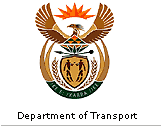 |
RoadsThe total length of roads in KwaZulu-Natal is 25,600 km.
This includes 1,147 km of the road network in the
eThekwini
Metro area and 1,138 km of national routes. 6,656 km are
surfaced and 18,943 km are gravel.
The main national routes are the N3 (Durban to Gauteng),
N2 South (Durban to Kokstad) and the N2 North (Durban to
Pongola). The N3 to Gauteng is the busiest road
freight corridor in South Africa, carrying a volume of
over
1.5 million vehicles per year on the Durban to
Pietermaritzburg section. The authorities charged with
the
maintenance of provincial roads face the continual
challenge of maintaining the condition of roads with
limited funds, in spite of increasing usage.
The combined effect of national policies of deregulation
of road transport, commercialisation of rail, increased
legal axle-mass loads and gross combination mass of heavy
vehicles has resulted in a continual shift of
cargo from rail to road transport. This results in an
increase in road damage, accidents, congestion and gas
emissions.
The situation is aggravated by endemic overloading of
heavy vehicles which, though better controlled in
KZN than the rest of the country, has negative
consequences for the life of the roads in the province.
The cumulative effects of increasing road usage and
accumulated deficits in the funding of road maintenance
are
felt by all road users in terms of increased
vehicle operating costs. The deteriorating condition of
roads in KwaZulu-Natal is a cause for grave concern as it
contributes to rising costs, inflation and increasing
accident rates. It is noteworthy that the Department has
in recent years, placed considerable
emphasis on the development of roads in remote rural areas
and is in the process of upgrading several major
provincial roads such as the P700 route to Ulundi and
the P496 John Ross Highway from Empangeni to Richards Bay .
It will in the near future be critically necessary to
reassess the provision of road infrastructure between the
N3 corridor and the Port of Durban as increasing
congestion and delays are having a negative impact on the
efficiency of the logistics system surrounding the port. Road Infrastructure
|
 |



